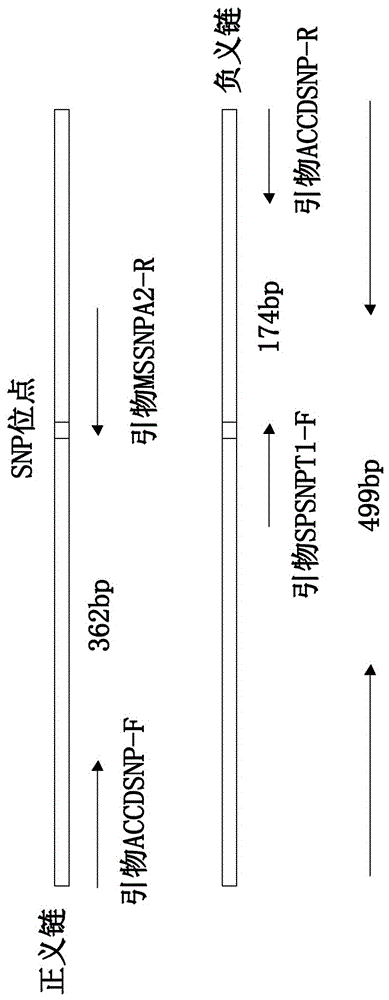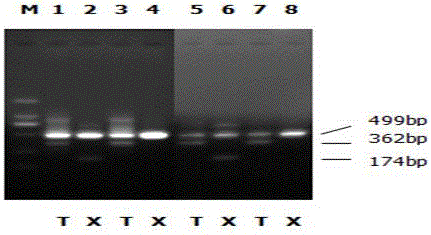Method and PCR (polymerase chain reaction) primer for identifying dendrobium officinale
A technology of Dendrobium officinale and Dendrobium candidum, applied in the field of PCR primers, can solve problems such as poor stability, difficulty in grasping and teaching, and achieve the effects of low requirements, avoiding false identification, and sensitive identification methods
- Summary
- Abstract
- Description
- Claims
- Application Information
AI Technical Summary
Problems solved by technology
Method used
Image
Examples
Embodiment Construction
[0034] Specific embodiments of the present invention will be described below with reference to the accompanying drawings.
[0035] In this specific embodiment, the samples to be tested are wild Dendrobium candidum collected from Taining, Fujian Province by the Sanming Academy of Agricultural Sciences in Fujian Province and wild dendrobium dendrobium collected from Huyuan Township, Shaxian County, Fujian Province. The above materials were identified by Professor Wei Daozhi of Fujian Agriculture and Forestry University as The original plant of Dendrobium officinale Kimura et Migo and Dendrobium moniliforme (L.) Sw.
[0036] A method for identifying dendrobium officinale, comprising the steps of:
[0037] 1. Extract the DNA of the sample to be tested;
[0038] Total DNA was extracted from leaves of Dendrobium officinale and Dendrobium slender stems by the modified CTAB mini-method.
[0039] Take 0.1 g of young leaves, add liquid nitrogen to grind to powder, transfer to a 2 mL c...
PUM
 Login to View More
Login to View More Abstract
Description
Claims
Application Information
 Login to View More
Login to View More - R&D
- Intellectual Property
- Life Sciences
- Materials
- Tech Scout
- Unparalleled Data Quality
- Higher Quality Content
- 60% Fewer Hallucinations
Browse by: Latest US Patents, China's latest patents, Technical Efficacy Thesaurus, Application Domain, Technology Topic, Popular Technical Reports.
© 2025 PatSnap. All rights reserved.Legal|Privacy policy|Modern Slavery Act Transparency Statement|Sitemap|About US| Contact US: help@patsnap.com


